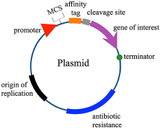Shedding Light on Human Metapneumovirus: A Stealthy Respiratory Invader
Human Metapneumovirus (HMPV) stands as a significant contributor to respiratory infections worldwide, presenting a range of symptoms from mild cold-like manifestations to severe respiratory distress. Despite its stealthy nature, understanding its characteristics, symptoms, transmission routes, and diagnostic methods is crucial in combatting its spread and mitigating its impact on public health.
Understanding Human Metapneumovirus:
HMPV belongs to the Paramyxoviridae family, closely related to respiratory syncytial virus (RSV), and was first identified in 2001. Since then, it has emerged as a common respiratory pathogen, particularly affecting vulnerable populations such as infants, young children, the elderly, and individuals with weakened immune systems.
Symptoms and Clinical Manifestations:
The symptoms of HMPV infection resemble those of other respiratory viruses and may include fever, cough, nasal congestion, sore throat, and difficulty breathing. In severe cases, especially among high-risk groups, HMPV can lead to complications such as bronchiolitis and pneumonia, necessitating medical intervention and hospitalization.
Transmission Routes:
HMPV spreads primarily through respiratory droplets when an infected person coughs, sneezes, or talks. Additionally, the virus can survive on surfaces for extended periods, facilitating indirect transmission through contact with contaminated objects. Crowded settings such as schools, daycare centers, hospitals, and nursing homes serve as hotspots for HMPV transmission, emphasizing the importance of infection control measures.
Diagnostic Methods:
Timely and accurate diagnosis of Human Metapneumovirus (HMPV) infection is pivotal for effective management and containment of the virus. Diagnostic procedures typically involve the collection of respiratory specimens, such as nasopharyngeal swabs or nasal washes, from symptomatic individuals. These specimens are then subjected to laboratory analysis to detect the presence of HMPV antigens or nucleic acids.
Rapid diagnostic tests play a crucial role in expediting the diagnostic process for HMPV. These tests utilize immunofluorescence assays or molecular methods, such as polymerase chain reaction (PCR), to detect viral antigens or genetic material in respiratory samples. Rapid tests offer quick results, often within hours, enabling healthcare providers to promptly identify HMPV infections and initiate appropriate treatment and infection control measures. However, it's important to interpret rapid test results in conjunction with clinical findings and epidemiological factors, as false negatives or positives may occur. Confirmatory testing may be necessary in certain cases to ensure accurate diagnosis and appropriate patient management.
Preventive Strategies:
Preventing HMPV transmission involves implementing respiratory hygiene practices and infection control measures. These include frequent handwashing with soap and water, covering coughs and sneezes with a tissue or elbow, avoiding close contact with symptomatic individuals, and disinfecting frequently-touched surfaces. Vaccines against HMPV are currently under development, offering promise for future prevention efforts.
Conclusion:
Human Metapneumovirus poses a significant public health challenge, causing respiratory infections with varying severity and impacting vulnerable populations disproportionately. Through increased awareness, effective diagnostic methods, and stringent preventive measures, we can curb the spread of HMPV and reduce its burden on global health systems. Continued research and collaboration are essential in developing targeted therapies and preventive strategies to combat this stealthy respiratory invader effectively.
Recent Posts
-
Shedding Light on Human Metapneumovirus: A Stealthy Respiratory Invader
Human Metapneumovirus (HMPV) stands as a significant contributor to respiratory infections worldwide …23rd Apr 2024 -
I.M.A.G.E. Consortium clones distributed by Reportergene
Welcome to THE I.M.A.G.E. ConsortiumReportergene is now part if our Network in the GEN Group. Welc …15th Feb 2014


